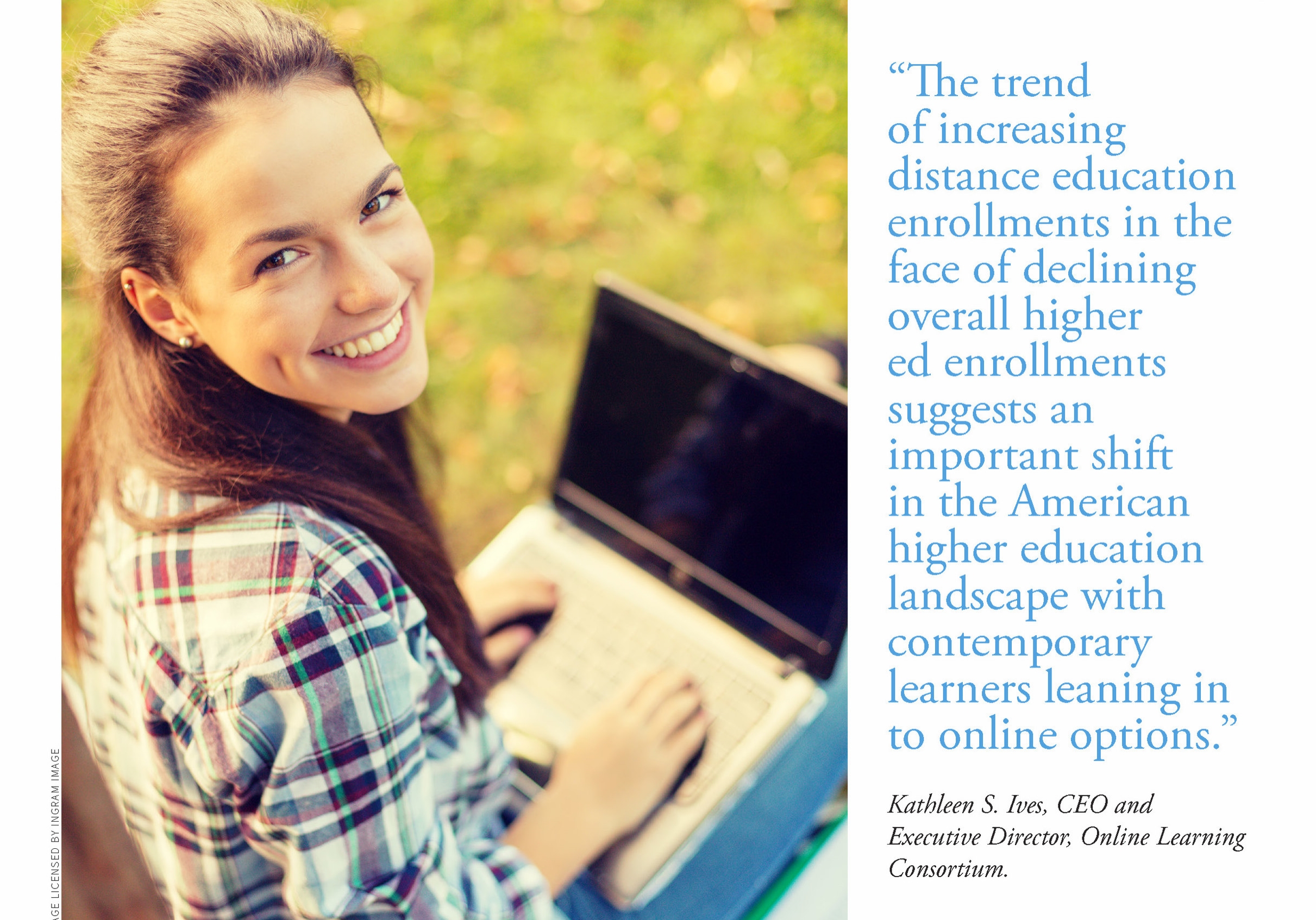The 2015 Survey of Online Learning conducted by the Babson Survey Research Group in partnership with the Online Learning Consortium (OLC), Pearson, WCET, StudyPortals and Tyton Partners and released this year reveals the number of higher education students taking at least one distance education course in 2015 is up 3.9 percent over the previous year. Growth, however, was uneven; private non-profit institutions grew by 11.3 percent while private for-profit institutions saw their distance enrollments decline by 2.8 percent. These and other findings were published in a report titled, “Online Report Card: Tracking Online Education in the United States.”

The 2015 Survey of Online Learning conducted by the Babson Survey Research Group in partnership with the Online Learning Consortium (OLC), Pearson, WCET, StudyPortals and Tyton Partners and released this year reveals the number of higher education students taking at least one distance education course in 2015 is up 3.9 percent over the previous year. Growth, however, was uneven; private non-profit institutions grew by 11.3 percent while private for-profit institutions saw their distance enrollments decline by 2.8 percent. These and other findings were published in a report titled, “Online Report Card: Tracking Online Education in the United States.”
“The study’s findings highlight a thirteenth consecutive year of growth in the number of students taking courses at a distance” said study co-author I. Elaine Allen, co-director of the Babson Survey Research Group.
“Institutions with distance offerings remain as positive as ever, but there has been a retreat among leaders at institutions that do not have any distance offerings,” co-author Jeff Seaman added.
Growth has continued despite muted support by faculty. The study reveals only 29.1 percent of academic leaders say their faculty accept the “value and legitimacy of online education.” The proportion of chief academic leaders reporting online learning is critical to their long-term strategy dropped to 63.3 percent in the most recent results.
“While enrollments in higher education institutions decreased overall, enrollments in online programs continued to increase. We have seen strong growth in online professional degree programs as learners are increasingly focused on employability and career advancement. As more institutions turn to professional degree programs to meet this new demand, we expect to see accelerated growth in online learning continue over the next three to five years,” said Todd Hitchcock, senior vice president, Online Learning Services, Pearson.
“The trend of increasing distance education enrollments in the face of declining overall higher ed enrollments suggests an important shift in the American higher education landscape with contemporary learners leaning in to online options,” said Kathleen S. Ives, CEO and Executive Director, Online Learning Consortium. “The majority of academic leaders recognize this and understand online learning is critical to their institution’s long-term strategy.”
Key report findings include:
- A year-to-year 3.9 percent increase in the number of distance education students, up from the 3.7 percent rate recorded last year.
- More than one in four students (28 percent) now take at least one distance education course (a total of 5,828,826 students, a year-to-year increase of 217,275).
- The total of 5.8 million fall 2014 distance education students is composed of 2.85 million taking all of their courses at a distance and 2.97 million taking some but not all distance courses.
- Public institutions command the largest portion of distance education students with 72.7 percent of all undergraduate and 38.7 percent of all graduate-level distance students.
- The proportion of chief academic leaders that say online learn-ing is critical to their long-term strategy fell from 70.8 percent last year to 63.3 percent this year.
- The percent of academic leaders rating the learning outcomes in online education as the same or superior to those in face-to-face instruction is now at 71.4 percent.
Only 29.1 percent of academic leaders report that their faculty accept the “value and legitimacy of online education.” Among schools with the largest distance enrollments, 60.1 percent report faculty acceptance while only 11.6 percent of the schools with no distance enrollments do so.
“Clearly many private, non-profit institutions are aggressively in-vesting in distance education,” said Russell Poulin, WCET’s Director of Policy & Analysis. “Between 2012 and 2014, students taking all their courses at a distance grew by 33 percent for non-profits. They were only a few hundred students away from passing the for-profit sector for having the second most number of enrollments. Public colleges still lead the way, by far.”